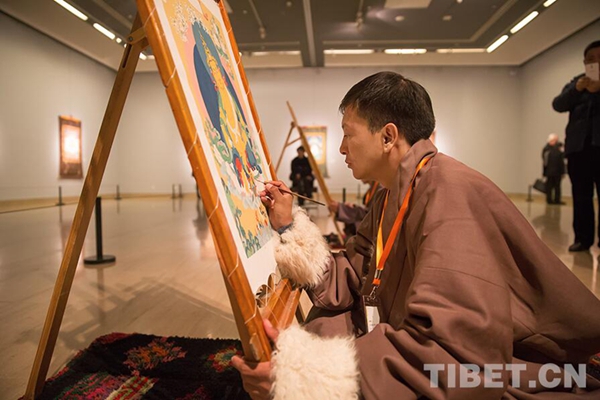Thangka artworks exhibited at national museum
china.org.cn / chinagate.cn by Zhou Jing, January 10, 2017 Adjust font size:
A collection of Tibetan Thangka art pieces were exhibited at the National Art Museum of China in Beijing on Saturday.
|
Tibetan Thangka artists are painting at the exhibition's opening ceremony at the National Art Museum of China, Beijing, Jan. 7, 2017. [Photo / Tibet.cn] |
Titled "Tibet in the Heaven - Joint Exhibition of Top Tibetan Thangka Works," the exhibition displays 55 art pieces created by young and senior local Tibetan painters and Thangka artists.
The art form of Thangka has a history of more than 1,300 years and usually depicts religious themes. Thangka arts are separated into different schools of paintings, including Manthang , Karma Gardri and Chintse schools, among others.
This exhibition shows the integration of modern and traditional skills that have been popular in Tibet for centuries, said Zhang Xiaofeng, vice president of the Tibet Autonomous Region Federation of Literary and Art, at the opening ceremony of the exhibition.
Tashi, 34 years old, one of the Tibetan Thangka painters attending the opening, began learning to paint when he was 11. He told China.org.cn that his father and grandfather are both Thangka painters and that Thangka painting has become the family's sacred mission. One of his paintings displayed at the exhibition was finished after eight months' hard work, while some more complicated works need several years to finish.
When not on display, Thangka paintings are traditionally kept unframed and rolled up. Because of their delicate nature, they have to be kept in dry places.
The exhibition will last until Jan. 18.
